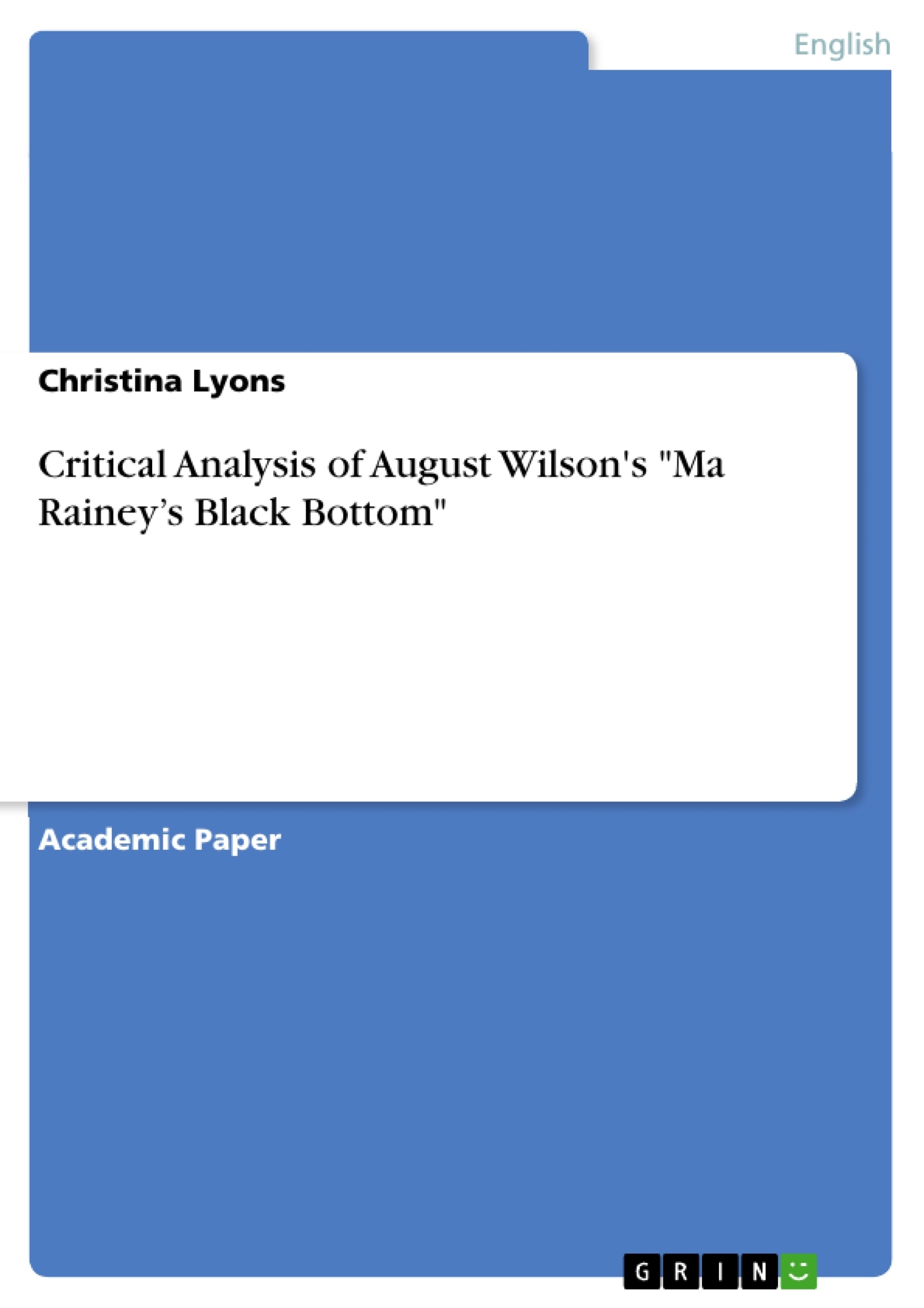In his play Ma Rainey’s Black Bottom, opened at the Yale Repertory Theatre on April 6, 1984, the African American playwright August Wilson evokes provocation, individualism versus general conceptions of the Black man’s world, conservatism versus progressiveness, and exploitation. The play surprises by its unanticipated, cruel ending, is relatively poor in action but subtly embeds external conflicts (respectively, racial issues), as well as internal conflicts (trivial quarrels among the characters).
Since I see a crucial juxtaposition between two characters – Toledo, the intellectual, and Levee, the ignorant, who theatrically become opponents in the final man-slaughter scene – I am focusing on a comparison between those two after a brief description of the plot and the set of characters.
The first third of the play bears a faint resemblance with Waiting for Godot, because it depicts the impatient White producer and manager, as well as the quarrelling Black band members waiting for their singer, the famous Ma Rainey, who takes her time getting her “big black bottom” to the rehearsal scheduled for 1:00 p.m. She banishes one band member, ignorant, conceited, and vain Levee (who is constantly seen polishing his shoes), from future productions. Levee dreams of establishing his own band, anyway, hoping to become famous with his more modern songs – “not this old jug band shit” (16) – that the White producer has promised to record with him. However, the latter retracts his offer, offering him ridiculous five dollars for each of his songs, leaving Levee stranded, who is already so overheated that he overacts, pulls his knife, and in affect stabs his colleague Toledo who accidentally steps on his shiny shoe.
This shoe stepping scene (which takes place on page 87: “Hey! Watch it… shit! You stepped on my shoe!”) is foreshadowed by a similar event when another band member, Slow Drag, by mistake commits the same “crime” (p. 26: “Damn, Slow Drag! Watch them big-ass shoes you got.”) The irony of the play is that the most understanding of all characters is killed for nothing, for having left a tiny mark on the unstained, immaculate, eleven-dollars-worth of shoes.
Table of Contents
- Setting
- Plotline
- Theme
- Key Characters: Their Motifs, Motivations, and Marking-Offs
- Ma Rainey: Director
Objectives and Key Themes
The play, "Ma Rainey's Black Bottom," by August Wilson, aims to offer a glimpse into the lives of Black musicians in the 1920s and their struggles with exploitation by white managers within the recording industry.
- Racial Segregation and Exploitation
- Clash of Traditional and Modern Blues Styles
- Individualism vs. Collective Identity
- The Power of Music and its Role in Understanding Life
- The Importance of Oral Tradition and Resistance to White Dominance
Chapter Summaries
- Setting: The play takes place in a Chicago recording studio in the 1920s. The setting is confined to two rooms: the recording studio owned by a white producer and the bandroom where the Black musicians rehearse.
- Plotline: The play follows the tension-filled wait for Ma Rainey, the blues singer, to arrive for her recording session. The Black musicians and their white producer and manager clash in the wait, culminating in a tragic confrontation.
- Theme: The play examines the theme of the exploitation of Black musicians by white managers in the 1920s, highlighting the social and economic injustices they face.
- Key Characters: Their Motifs, Motivations, and Marking-Offs: The play focuses on the conflict between two key characters: Toledo, the intellectual, and Levee, the ignorant. The play explores themes of provocation, individualism vs. collective identity, conservatism vs. progressiveness, and exploitation.
- Ma Rainey: Director: The play centers around the strong-willed character of Ma Rainey, a blues singer, who embodies the power and resilience of Black women in the face of systemic oppression.
Keywords
The play explores themes of racial inequality, blues music, the history of African Americans, the clash of traditional and modern musical styles, the exploitation of Black artists, and the power of oral tradition.
- Quote paper
- Dr. Christina Lyons (Author), 2006, Critical Analysis of August Wilson's "Ma Rainey’s Black Bottom", Munich, GRIN Verlag, https://www.grin.com/document/1132988




